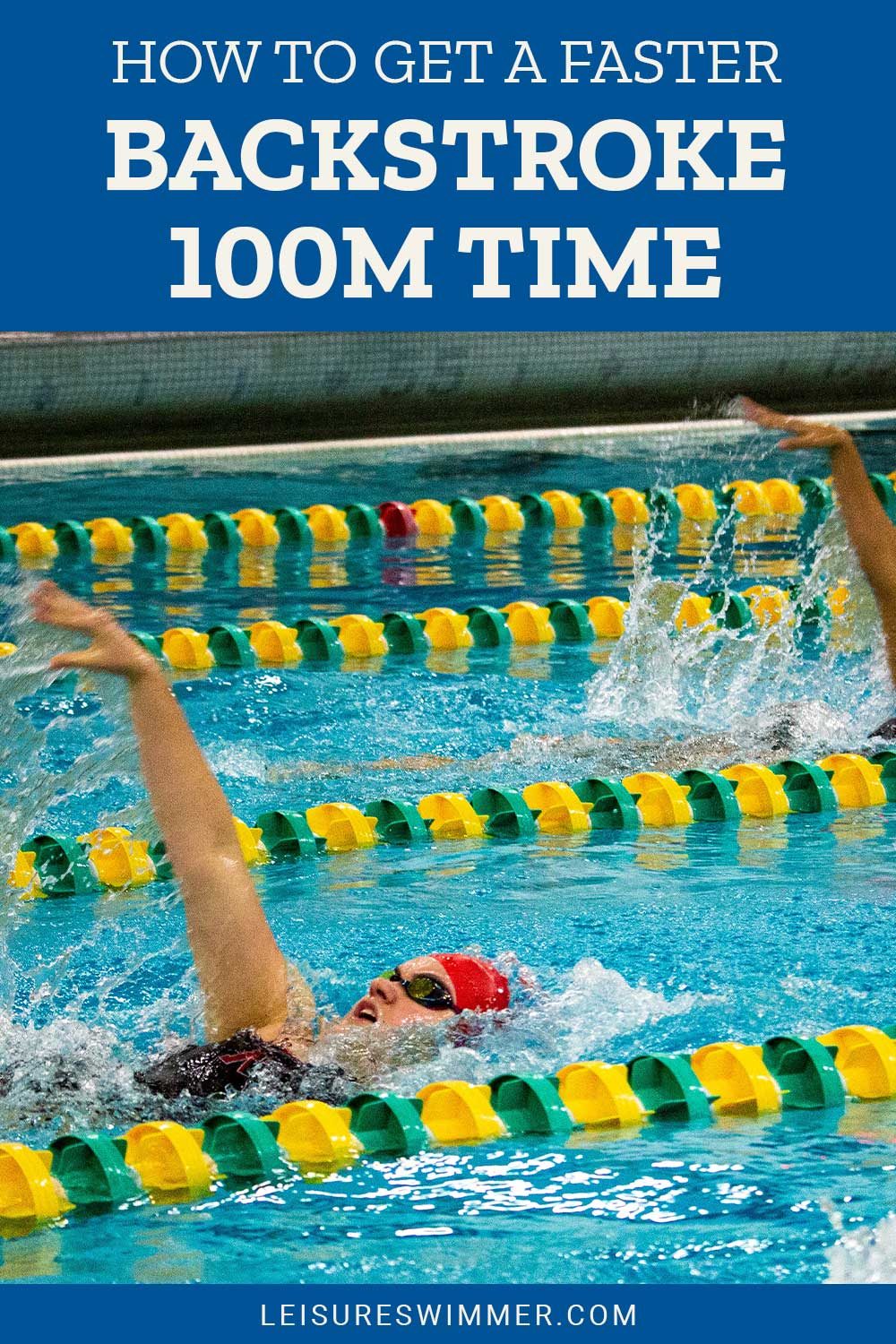How To Get A Faster Backstroke 100M Time
We may earn commissions for purchases made through links on our site. Learn more on our about us page.
The million-dollar question of how to shave seconds off my race time is where the trainers make the big bucks by getting their athletes in peak condition. In today’s sporting world, many athletes are taught to perform specific weightlifting techniques.
For instance, a swimmer will want to strengthen the muscles in the arms, back, and shoulders to improve their ability to pull themselves through the water.
If not the essential part of athletic competition, it is undoubtedly one of which I am speaking about cardiovascular health and fitness. For example, the stronger a swimmer with the conditioning to match will produce faster lap times no matter the stroke type.

What is a Good Time for the 100m Backstroke?
There is going to be a swinging scale when it comes to a good time for the 100m backstroke in occurrence to sage and ability level.
With that context, the general time in which a swimmer of average ability should comfortably complete a lap of 100m in around two minutes.
The next step will be for those that quickly make two minutes, which indicates a higher ability level, and this person should look to crack the minute and a half mark consistently.
The current World Record is by Thomas Ceccon (June 2022) with a time of fifty-one-point-six seconds while competing in Budapest, Hungary.

How Can You Improve Your Speed?
As mentioned earlier in the article, there are going to be certain training techniques that will build the right muscle sets, improve conditioning, and practice to perfect lines in the pool.
For example, swimmers can use weightlifting plans to build muscle, use resistance training programs (swimming upstream) to improve speed, and do other workouts designed to help an athlete improve.
The best way to improve is to put the time in at the pool, swim the laps, and challenge yourself to consistently make the minute 100m mark each time down and back. Then, the next step is spelled out, pushing yourself to go faster than a minute.
What Kind of Food Should You Eat?
Most of the top athletes in swimming will have a nutritionist or team trainer to speak to about diet, eating schedules, and proper foods.
According to Livestrong experts, a swimmer must eat between point-fifty-five and point-eight grams of protein-rich food per pound of body weight.
For example, a one-hundred-and-fifty-pound swimmer will need to consume between eighty-two and one hundred and twenty grams of protein per day.
This does not include when an athlete is looking to build muscle, they will need to increase their ‘hypothetical’ weight and food intake portions throughout the day.
How Long Does it Take?
When you look at the professionals and Olympians on the screen, remember most of them have been participating in their sport of choice since childhood. Yet, it took them a lifetime to get to their pinnacle of ability, which should put training in perspective.
A swimmer training hard and with an experienced coach can expect results very quickly. An average swimmer making times of two minutes per lap will easily see results within a few months once the levels of fatigue and soreness subside and lessen.
The mentality is to keep going. Eventually, results will show up daily with unexpected beneficial ‘side effects.’
Which Swimming Exercises Can Help You Improve Your speed?
The most fundamental workout that a swimmer can do is to swim; all jokes aside, one training technique known to work is a timing exercise.
As mentioned above, the average lap is around two minutes; the goal is to swim ten laps consecutively under that two-minute mark per lap.
The next step is to push oneself until the peak is met; new facilities and training equipment will utilize resistant water flows for a swimmer to work out in. In doing this, the still waters of the pool will seem easy to cut through in direct comparison to the flowing training waters.
Final Thoughts on How to get a Faster Backstroke 100m time
The idea of the backstroke is to keep the nose and mouth above water, providing an unbroken source of oxygen for the person utilizing the technique.
The fact that there are athletes that can swim at speeds up to fifty seconds per 100m lap is an incredible achievement of modern human ability.
For non-Olympian athletes, swimming can be seen as an effective way to stay healthy and fit. Simple workouts, such as the two-minute lap programs, will quickly push a person to have better energy levels and overall fitness abilities.
The idea is to be patient with your body but also consider giving it help with supplements and nutritionist-recommended foods and hydration.


